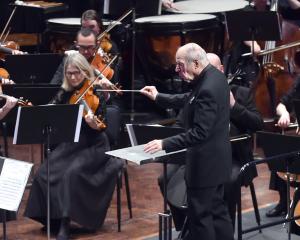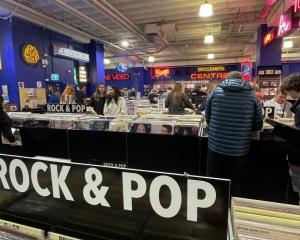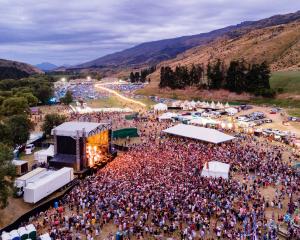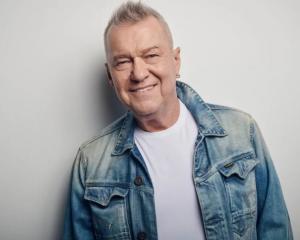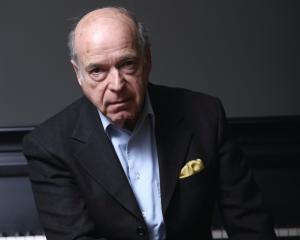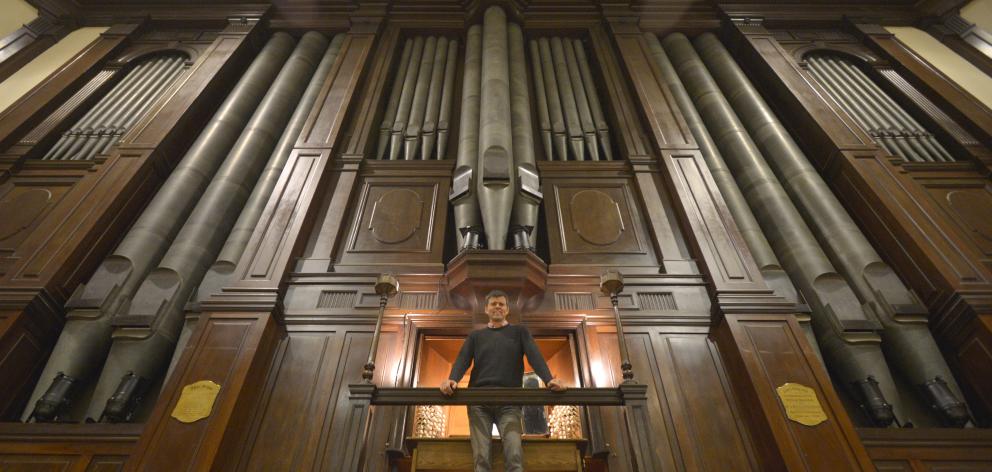
As churches close their doors and funds get tighter, the future of many of Otago and Southland’s pipe organs are in doubt.
The Otago and Southland Organ Association believes the time will come where the ability to perform and listen to music from pipe organs will be increasingly limited.
‘‘Inevitably, choices over which instruments are to be saved and by what means these can be achieved will need to be made,’’ Otago and Southland Organ Association vice-president Stephen Chalcroft says.
‘‘There is very little money available and some hard, and sad, decisions will continue to be made.’’
So to raise awareness of the importance and beauty of the regions’ instruments and their music, the association is holding a concert to celebrate not only the pipe organ but the association’s 60th anniversary.
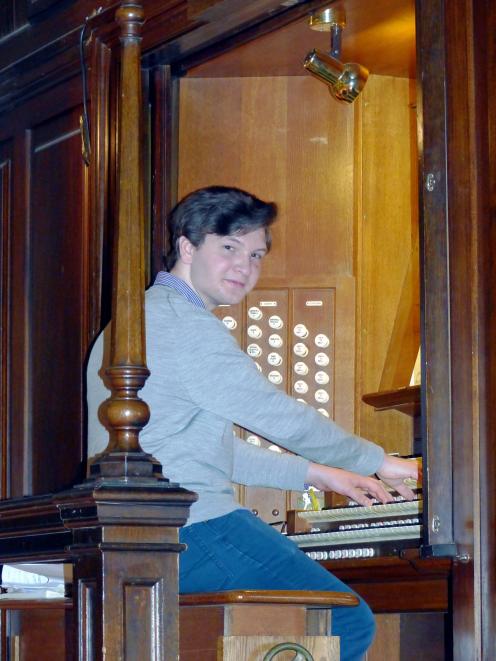
Chalcroft says it is lucky the organ is still intact today and able to be played.
‘‘Its future, like many others in the region, will depend upon its utility value to its owners and an acceptance of the need to maintain it as a quality asset.’’
Burchell says the regions are very lucky to have a group of very good organs along with a group of less significant instruments which are interesting and still good to play.
There are of course the ‘‘Rolls Royce’’ instruments such as Norma at the Dunedin Town Hall and the St Paul’s and St Joseph’s Cathedrals’ organs, but even those need work occasionally.
St Paul’s organ was very lucky to escape major damage in the fire that damaged its roof, but it has an electric switch from the 1970s that is a bit tired; Norma is doing well but a computer addition has failed and St Joseph’s had a lung transplant recently to resolve its ‘‘wind’’ problems.
Those instruments are being looked after, but there is a concern for the smaller ones in the future.
‘‘Church congregations are dwindling and they less able to look after instruments they have or the buildings they are in.
‘‘There is a real concern for how we preserve these instruments in the future,’’ Burchell says.
Chalcroft says there has been a steady decline in the number of working instruments, also due to a lack of regular use and routine maintenance.
‘‘There are fewer pipe organs throughout the south. Instruments that have been beyond repair or removed because they are redundant have varied fates — some may end up in private residences or museums, others may have their parts ‘cannibalised’ to aid the repair or upgrade of instruments elsewhere.
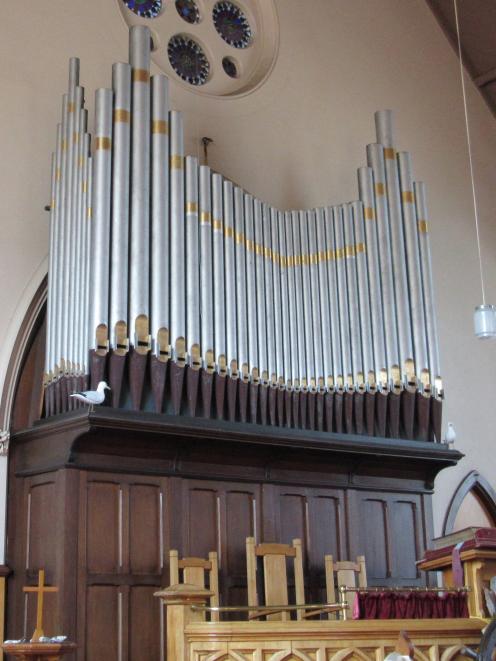
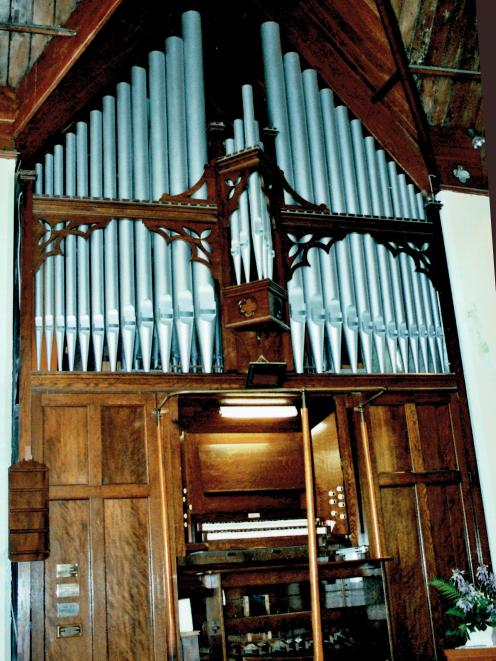
A Maori Hill church’s organ is in storage and when St David’s Church closed in North East Valley, its organ was sold to a collector from Herbert.
Burchell, who also maintains a couple of the city’s organs, says not all pipe organs are worth saving, as there were many factory-made organs brought into the country and installed by locals.
But there are interesting examples such as the experimental design of Holy Trinity’s at Port Chalmers, which is now in a decrepit state.
‘‘It was written up at the time and is a unique instrument worldwide.’’
Burchell uses the organs in Knox Church and at All Saints for teaching purposes. The All Saints organ still has mechanical linkages, which make it a good instrument to feel how it plays.
‘‘It’s not like playing a switchboard as some are today, you can feel what is happening.’’
St Matthew’s’ organ is another historic organ which has been little-used by its congregation in the past as it did not have a player to champion it.
There is still a core of people who like to listen to organ music, and Burchell’s town hall concerts on Norma regularly attract more than 100.
‘‘It is a specialist interest, but a lot of people do like to hear the sound of an organ even if they do not know a lot about it.’’
One of the challenges with people’s perceptions of organs is that they often hear them badly played by people with not enough knowledge to bring out their best.
‘‘It can sound lively and rhythmic but they are not intrinsically rhythmic instruments, so you have to work hard to get that sound.’’
While numbers of people learning the organ have been low in past years, Burchell has the most students he has had in years, including three studying at university level.
‘‘I have half a dozen with the prospect of new players coming on, so it seems very promising.’’
There does not appear to be any reason for the increase in interest, he says.
‘‘I think its just a happy set of circumstances.’’
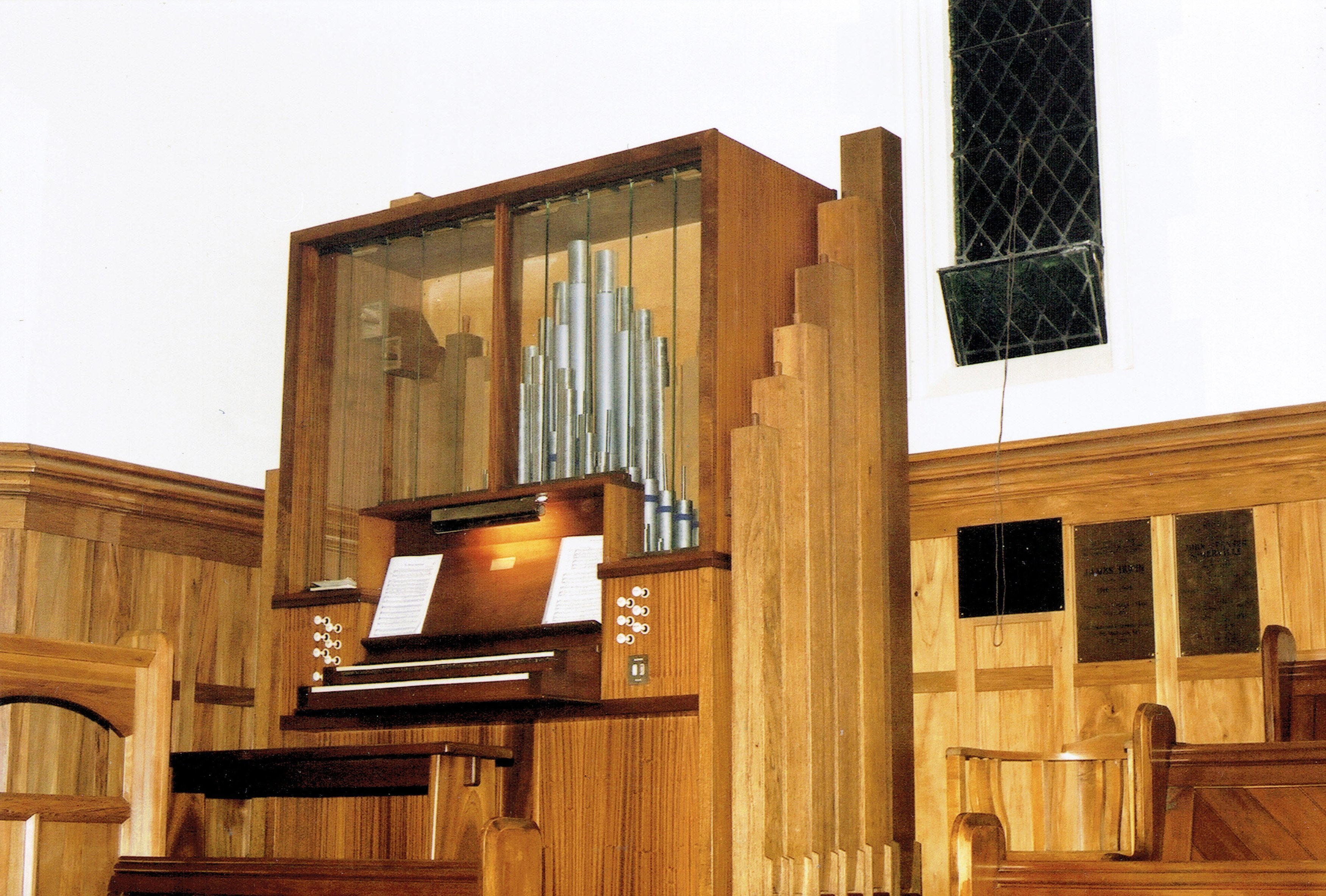
Henry Holden-Bluck, a geology student at the University of Otago, is one of those students, and will play at the association’s concert.
He has come from a piano-playing background and became interested in the organ after hearing Christchurch Cathedral’s being played and seeing Youtube videos on social media.
Learning the organ — he has access to St Joseph Cathedral’s for practice — has been quite challenging as he learnt to switch from his ‘‘piano mindset’’ to an organ one.
‘‘It’s quite different to the piano and you’ve got the co-ordination of your feet as well.’’
He urges anyone who is interested to give it a go and believes the younger a person starts, the easier to learn.
‘‘It’s a brilliant instrument to play.’’
Burchell would like to see the city get a modern mechanical organ which are more common in other parts of the world so students get the best of both worlds.
Chalcroft says the association’s vision is for a separate auditorium with ‘‘favourable acoustic qualities’’ to be found for the installation of a pipe organ that can be accessible to students and performers.
‘‘Fundraising needs to be resolved before any planning can commence — it, for the moment, remains a pipe dream. We need more like Mr Alan English and his 1967 donation.’’
English donated the money to enable St Matthew’s organ to be rebuilt in the late 1960s, saving it from being replaced.
While there are electronic versions of organs available for people to learn and practise on, Chalcroft says they lack the ‘‘feel’’ of a well-designed instrument being played in an appropriate acoustic space.
- NZ Organ Preservation Trust
To see
“Its Bev’s time to be heard”
St Matthew’s Anglican Church
November 21 at 2pm



